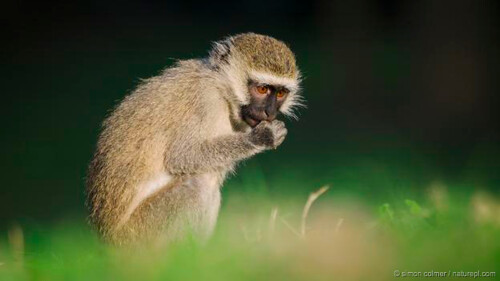 The colourful Lilian's lovebird is described as 'Liwonde's jewel' by BirdLife International organisation. Image by Dr P MarazziLilian's lovebirds are among the many animals threatened by deliberate waterhole poisoning in Africa.
The colourful Lilian's lovebird is described as 'Liwonde's jewel' by BirdLife International organisation. Image by Dr P MarazziLilian's lovebirds are among the many animals threatened by deliberate waterhole poisoning in Africa.
Almost a third of the Lilian’s lovebird population in Liwonde National Park, Malawi, is at risk of being poisoned each year, scientists have said.
Illegal waterhole poisoning caused the deaths of five to 50 of the birds every year from 2000 to 2012, according to reports collected for a new study.
Researchers from the University of KwaZulu-Natal in South Africa said that hunters poison water pools to kill larger animals for food.
But the activity also affects other species such as Lilian’s lovebirds.
The findings have been published online this month in African Journal of Ecology.
The team said poisoning incidents seem to have decreased in recent years but called for the Malawi government to put more measures in place to prevent the lethal activity in protected areas.
“Each year about 32% of the lovebird population are at risk of encountering a poisoned waterhole,” said Tiwonge Mzumara, who worked on the study.
“Some of the waterholes that are poisoned are very close to areas where we recorded the lovebirds breeding.”
Poisoning incidents in the park are mainly the result of subsistence hunting, according to Ms Mzumara. Animals such as bushbuck, impala, doves and guinea fowl are being targeted at water pools.
Deadly waters
Lilian’s lovebirds (Agapornis lilianae) are colourful, small parrots. The population in Liwonde National Park in southern Malawi represents about 20% of the global population of the species.
To find out how poison has affected the lovebirds, the researchers examined records of poisoning from the park’s law enforcement department, and observed bird flocks’ drinking behaviour at waterholes.
They found most poisoned Lilian’s lovebirds were recorded during the dry season, when the birds congregate at waterholes in numbers ranging from one to 100 individuals.
The species’ dependence on water pools during these months make them very vulnerable to poisoning, especially when they arrive at water in large flocks around roosting time.
 Vervet monkeys were among the animal victims found dead at poisoned waterholes. Image by Simon Colmer During the wet season (January to May) the birds used other water sources and were absent from the monitored waterholes.
Vervet monkeys were among the animal victims found dead at poisoned waterholes. Image by Simon Colmer During the wet season (January to May) the birds used other water sources and were absent from the monitored waterholes.
Between 2000 and 2012 there were 31 waterhole poisoning cases reported by park scouts, with one to eight incidents per year.
Other animals found dead around poisoned water included vervet monkeys, baboons, a warthog and a hippo.
Most poisoning instances occurred at four waterholes in the south of the park.
From archive records and observations of the birds’ behaviour, the team estimated 32% of Lilian's lovebirds in the park are at risk of being poisoned.
Ms Mzumara told BBC Earth the most common poisons used are "cheap pesticides" that are "easily accessible".
She commented: “This study adds information to the issues of poisoning where there is still very little known.”
The team said that the waterholes that have been repeatedly poisoned could be better monitored by increased patrols and camera traps.